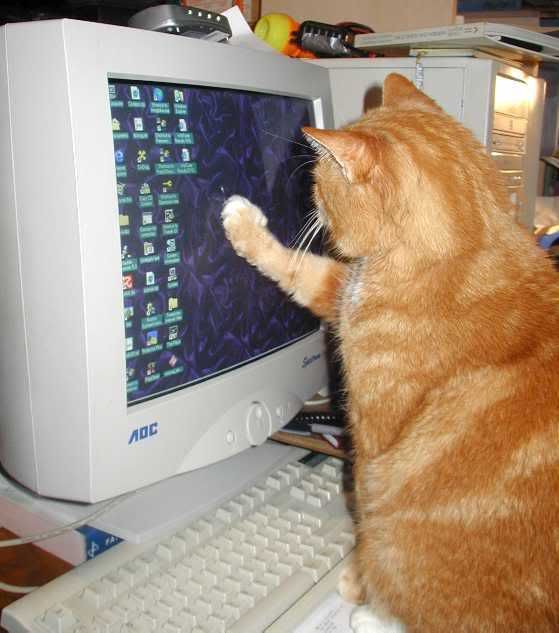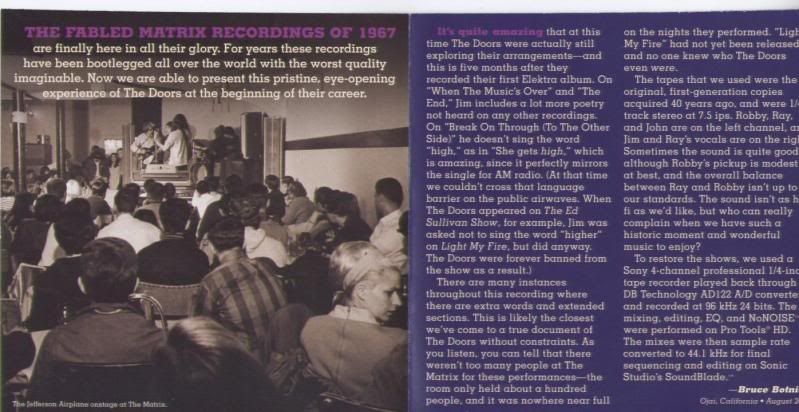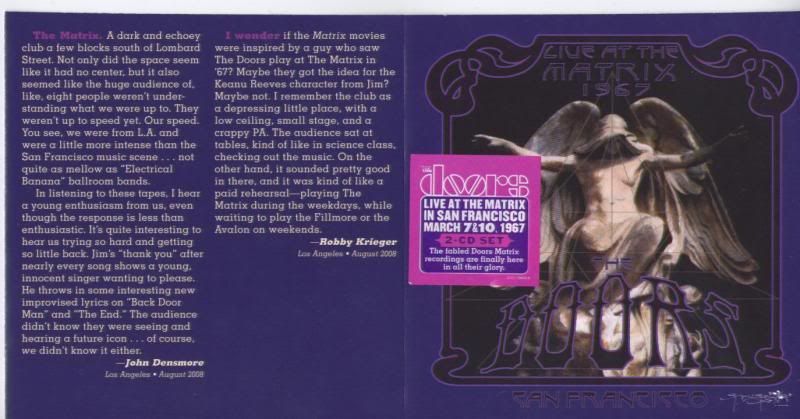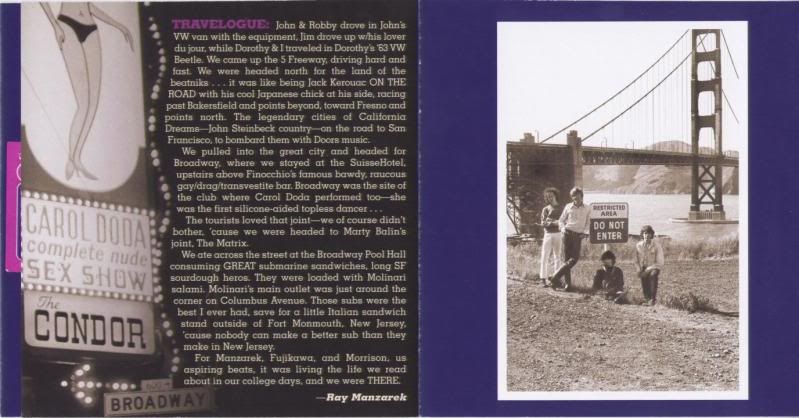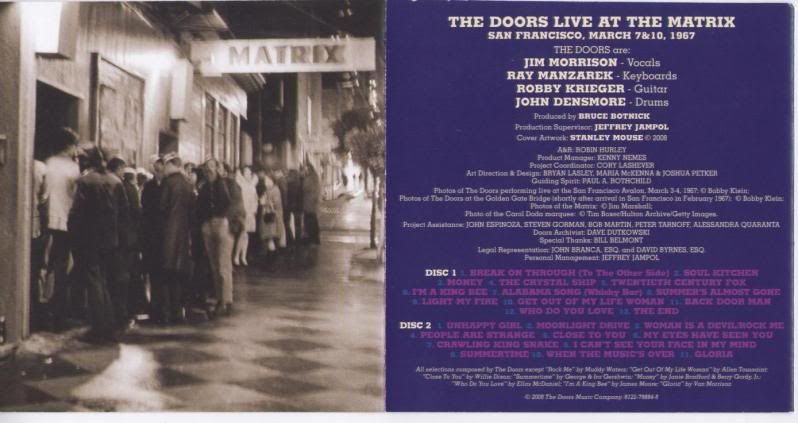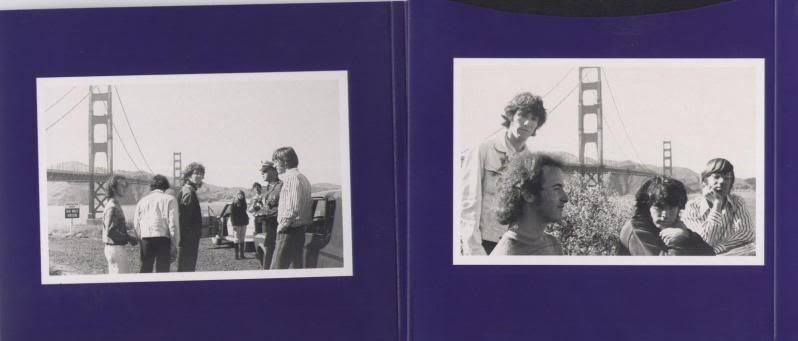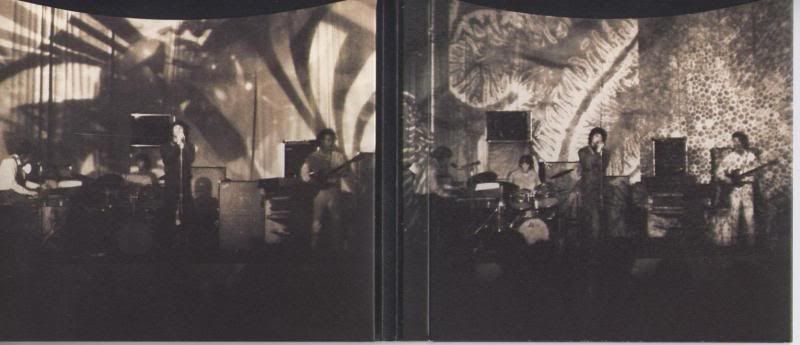|
|
Post by darkstar2 on Nov 13, 2008 19:16:55 GMT
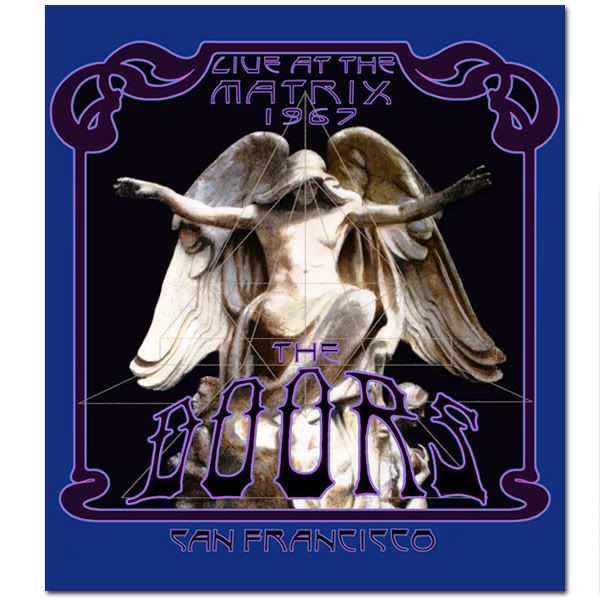 The Doors were still working on arrangements and feeling out their moves when they played the Matrix Club in San Francisco for four nights in March, 1967- just two months after the release of their revolutionary self-titled debut album. These two seminal gigs were captured on tape but were previously unreleased until this new two disc set. 'Live at the Matrix' features over two hours of performances from the legendary band led by lead singer Jim Morrison. Part 11.Break On Through (To The Other Side)
2.Soul Kitchen
3.Money
4.The Crystal Ship
5.Twentieth Century Fox
6.I'm A King Bee
7.Alabama Song (Whisky Bar)
8.Summer's Almost Gone
9.Light My Fire
10.Get Out Of My Life, Woman
11.Back Door Man
12.Who Do You Love
13.The EndPart 21.Unhappy Girl
2.Moonlight Drive
3.The Woman Is A Devil Rock Me
4.People Are Strange
5.Close To You
6.My Eyes Have Seen You
7.Crawling King Snake
8.I Can See Your Face In My Mind
9.Summertime
10.When The Music's Over
11.Gloria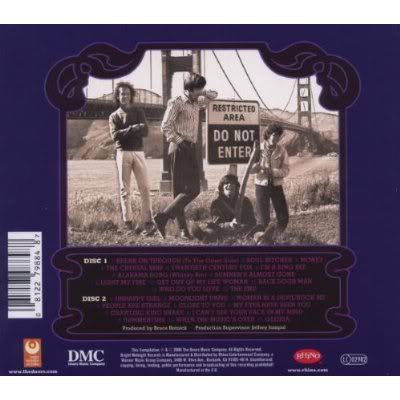 “It was early 1967, and The Doors were about to enter the consciousness of the nation. And this is the way it sounded!” - Ray Manzarek, from the set's liner notes Just weeks before their second single, “Light My Fire,” began its ascent to the top of the charts, The Doors played a two-night stand at The Matrix, a small San Francisco nightclub owned by the Jefferson Airplane's Marty Balin. The place was nearly empty both nights, so Jim Morrison, John Densmore, Robby Krieger, and Ray Manzarek took a rare opportunity to improvise and experiment. The 2-CD set LIVE AT THE MATRIX, the latest in the acclaimed series of previously unreleased Doors concerts from Rhino and Bright Midnight Archives, presents over two hours of music from these fabled performances, recorded on March 7 and 10, 1967, While recent live Doors titles from Rhino and Bright Midnight have spotlighted the band's final tour before Morrison's death, LIVE AT THE MATRIX reaches back to their earliest days - and to shows that have been widely bootlegged but never officially issued. The new collection - featuring cover art by legendary San Francisco artist Stanley Mouse - was restored and meticulously mastered from first-generation tapes acquired by Elektra Records and The Doors 40 years ago. “This is probably the closest we've come to a true document of The Doors without constraints,” says Bruce Botnick, the album's producer and the band's longtime co-producer and engineer. On Disc One, the band performs much of its self-titled 1967 debut LP, released only two months prior to the Matrix shows. Highlights include expanded versions of “The End” and “Back Door Man,” “Alabama Song (Whisky Bar),” “Break On Through (To The Other Side)” and Allen Toussaint's “Get Out Of My Life, Woman,” which has never appeared on any previous Doors albums. Disc Two offers a glimpse of the band mapping out its future, working out early versions of several songs from upcoming albums: "Crawling King Snake" (LA Woman); "Summer's Almost Gone" (Waiting For The Sun); and nearly half of the songs from The Doors' second album, Strange Days. LIVE AT THE MATRIX continues Rhino's upgrade and expansion of The Doors' catalog that began in honor of the 40th anniversary of their self-titled 1967 debut album. I Like Music.com
Nov 13 2008ilikemusic.com > music news > The Doors - Live At The Matrix 1967 The Doors - Live At The Matrix 1967 Rhino and Bright Midnight Archives present Live At The Matrix 1967, the latest instalment in The Doors' acclaimed series of archival concert releases. This two-disc addition to the band's live canon contains two club shows witnessed by few but bootlegged by many. Restored and carefully mastered from first-generation tapes acquired by Elektra Records and The Doors 40 years ago, these historic shows never sounded better. The collection, featuring cover art by legendary San Francisco artist Stanley Mouse, is available from November 18th 2008. Where the previous three Bright Midnight Archives releases documented The Doors' final tour in 1970, Live At The Matrix 1967 rewinds to the band's early days for a pair of shows at a San Francisco club in March 1967. Only a handful of people showed up, so Jim Morrison, John Densmore, Robby Krieger, and Ray Manzarek played for each other, exploring song arrangements and jamming on a few blues favourites. Ironically, only a few weeks after the Matrix shows, the band's second single, Light My Fire, would make them famous, selling a million copies on its way to topping the chart during The Summer of Love. "It was early 1967 and The Doors were about to enter the consciousness of the nation. And this is the way it sounded," Manzarek writes in the album's liner notes. In spite of the empty room, the band is fully engaged, using the time to give The End and Back Door Man extra lyrics and extended sections. "This is probably the closest we've come to a true document of The Doors without constraints," says Bruce Botnick, the album's producer and the band's long-time co-producer and engineer. The band performs much of its self-titled debut on the first disc, including Soul Kitchen, Alabama Song (Whisky Bar), and the first single, Break On Through (To The Other Side). Along with those early originals, the band indulges its love of the blues with Bo Diddley's Who Do You Love, Muddy Waters' I'm A King Bee, and Allen Toussaint's Get Out Of My Life, Woman, which has never appeared on any previous Doors albums. The second disc offers a glimpse of the band mapping out its future, working out early versions of several songs from upcoming albums: Crawling King Snake (LA Woman); Summer's Almost Gone (Waiting For The Sun); and nearly half of the songs from The Doors' second album, Strange Days. www.ilikemusic.com/music_news/The_Doors_Live_At_The_Matrix_1967-5948 |
|
|
|
Post by jym on Dec 4, 2008 20:24:20 GMT
That's a positive review.But from what I've heard maybe they should compare it to the bootleg version that's been going around forever, & from people that have heard both the bootlegged gets the better review.
|
|
|
|
Post by TheWallsScreamedPoetry on Jan 22, 2011 17:22:26 GMT
Album: The Doors, Live at the Matrix 1967 (Rhino)(Rated 4/ 5 )
An artist's early death usually ensures that all their recorded performances are released in some form.
Something like that happened with Jim Morrison, though not all his shows with The Doors are quite as interesting as this, recorded at a tiny San Francisco club shortly before the release of their debut album. It captures the band trying out extra verses for "The End" and "When the Music's Over", and relaxing on covers of things like "Crawling King Snake", "Money", "Gloria" and a pretty tedious jazz instrumental run through "Summertime". Caught before adulation turned Morrison into some kind of monster, his more unassuming presence is a pointed contrast with the melodrama of performances such as those at Newhaven and Miami that got him arrested and cemented his legend. Spread over two CDs, the band's repertoire is drawn from the material that made up most of their first two albums – including "Light My Fire", "Break On Through" and "People Are Strange" – and presents the distinctive interplay between Robbie Krieger's waspish slide guitar, Ray Manzarek's organ parts and John Densmore's jazzy drumming, already developing into one of rock's more formidable units.
By Andy Gill The Independant
Friday, 28 November 2008
The Doors Live at the Matrix
The Doors were still a club band in the late winter and spring of 1967 — not yet stars, not quite spectacle, reliant on blues and R&B covers to get through a whole evening on the bandstand. Stuck in a long limbo between the January release of their debut album, The Doors, and the summertime explosion of their second single, "Light My Fire," the group played discothèques in Los Angeles and New York and, during a legendary engagement that March, more than a dozen sets over five nights at the Matrix, a tiny seated club in San Francisco. This two-CD set is the first official release of the widely bootlegged tapes made there, and barring the discovery of previously unknown reels from the band's 1966 learning curve on the Sunset Strip, the two dozen rough but vivid tracks on Live at the Matrix are the closest we will get to hearing the live Doors in their early heated maturity, before singer Jim Morrison's addiction to abandon turned their arena shows into hit-and-miss theater.
Even with a year's gigging and that perfect first album behind them, Morrison, organist Ray Manzarek, guitarist Robby Krieger and drummer John Densmore seem at times like a band in transition, not yet done working out the kinks in their interplay. "Light My Fire" opens like a wet match, in low bossa-nova gear — Manzarek's famous intro lick doesn't show up until after the first verse. But more often, the Doors sound sure of their gifts — they perform half of their next LP, Strange Days — and stretch out with a unique, muscular cohesion, despite the lack of a conventional bassist. Densmore's military snap, Krieger's metallic-sinew sustain and Manzarek's meaty, rolling-Bach surge in the midsection of "Soul Kitchen" and the long climax of "Moonlight Drive" are punchy psychedelic funk. After Morrison improvises new lines midway through "The End" ("Can you stand by and watch the pictures burn...."), the band swerves in kind, with a brief, jolting shift in the tense raga flow.
There is an unusual restraint in Morrison's vocals, a concentration rare on later live recordings, as if he didn't have enough room to perform at the Matrix. But he was never better, onstage or on record, than when he was in control of his impulses, and Morrison directs his eruptions in the dark march of "The Crystal Ship," the hellbent charge of "My Eyes Have Seen You" and the pure lust of Them's "Gloria" with a feral will and melodic clarity. The sparse, polite applause on these recordings suggests the Doors were not, in March 1967, the hottest thing in town. Everything else shows why that would change — soon.
By David Fricke Rolling Stone
November 27, 2008
The Doors Live at the Matrix
By the high summer of 1967, The Doors would have the number one single in America, their “Light My Fire” beginning the band’s bright burst of highly public notoriety. All of which makes this material from early March of that year all the more fascinating.
Culled from two-sets-a-night-stints at San Franciso’s Matrix Club, we find the band primed for greatness - evidently with only the waitresses there to hear it. Here, the sequence of the set has been reprogrammed to follow that of the debut LP, but the band – particularly on “Soul Kitchen” and “Summer’s Almost Gone” – sound hugely flexible, fully formed, and absolutely alive.
JOHN ROBINSON Uncut Magazine 2008
|
|
|
|
Post by TheWallsScreamedPoetry on Jan 22, 2011 17:36:19 GMT
THE DOORS DIAL IN AT THE MATRIXTwo-Disc Collection Includes Unreleased Recordings of the Band Playing a Small Club in San Francisco Just Weeks Before "Light My Fire" Made Them Stars Available November 18 from Bright Midnight Archives and Rhino September 09 2008 LOS ANGELES -- Rhino and Bright Midnight Archives present The Doors' LIVE AT THE MATRIX 1967, the latest installment in the band's acclaimed series of archival concert releases. This two-disc addition to the band's live canon contains two club shows witnessed by few but bootlegged by many. Restored and carefully mastered from first-generation tapes acquired by Elektra Records and The Doors 40 years ago, these historic shows never sounded better. The collection, featuring cover art by legendary San Francisco artist Stanley Mouse, will be available November 18 at all retail outlets Where the previous three Bright Midnight Archives releases documented The Doors' final tour in 1970, LIVE AT THE MATRIX 1967 rewinds to the band's early days for a pair of shows at a San Francisco club in March 1967. Only a handful of people showed up, so Jim Morrison, John Densmore, Robby Krieger, and Ray Manzarek played for each other, exploring song arrangements and jamming on a few blues favorites. Ironically, only a few weeks after the Matrix shows, the band's second single, "Light My Fire," would make them famous, selling a million copies on its way to topping the chart during The Summer of Love. "It was early 1967 and The Doors were about to enter the consciousness of the nation. And this is the way it sounded," Manzarek writes in the album's liner notes. In spite of the empty room, the band is fully engaged, using the time to give "The End" and "Back Door Man" extra lyrics and extended sections. "This is probably the closest we've come to a true document of The Doors without constraints," says Bruce Botnick, the album's producer and the band's longtime co-producer and engineer. The band performs much of its self-titled debut on the first disc, including "Soul Kitchen," "Alabama Song (Whisky Bar)," and the first single, "Break On Through (To The Other Side)." Along with those early originals, the band indulges its love of the blues with Bo Diddley's "Who Do You Love," Muddy Waters' "I'm A King Bee," and Allen Toussaint's "Get Out Of My Life, Woman," which has never appeared on any previous Doors albums. The second disc offers a glimpse of the band mapping out its future, working out early versions of several songs from upcoming albums: "Crawling King Snake" (LA Woman); "Summer's Almost Gone" (Waiting For The Sun); and nearly half of the songs from The Doors' second album, Strange Days. Before The Doors' LIVE AT THE MATRIX 1967 arrives, Rhino will offer a slipcase version of the acclaimed Perception boxed set. On October 21, this 6-CD/6-DVD collection will be available at all retail outlets for a suggested list price of $79.98. Originally released in 2006 in a deluxe, limited-edition package, the set contains all six of the band's studio albums as CD/DVD sets. Each CD includes the original mix of the album expanded with rare recordings. The DVD contains a surround sound mix of the album, the 40th Anniversary stereo mix of the album, as well as photos, videos, lyrics, and a discography. THE DOORS LIVE AT THE MATRIX 1967 Track Listing Disc One 1. "Break On Through (To The Other Side)" 2. "Soul Kitchen" 3. "Money" 4. "The Crystal Ship" 5. "Twentieth Century Fox" 6. "I'm A King Bee" 7. "Alabama Song (Whisky Bar)" 8. "Summer's Almost Gone" 9. "Light My Fire" 10. "Get Out Of My Life Woman" 11. "Back Door Man" 12. "Who Do You Love" 13. "The End" Disc Two 1. "Unhappy Girl" 2. "Moonlight Drive" 3. "Woman Is A Devil/Rock Me" 4. "People Are Strange" 5. "Close To You" 6. "My Eyes Have Seen You" 7. "Crawling King Snake" 8. "I Can't See Your Face In My Mind" 9. "Summertime" 10. "When The Music's Over" 11. "Gloria" 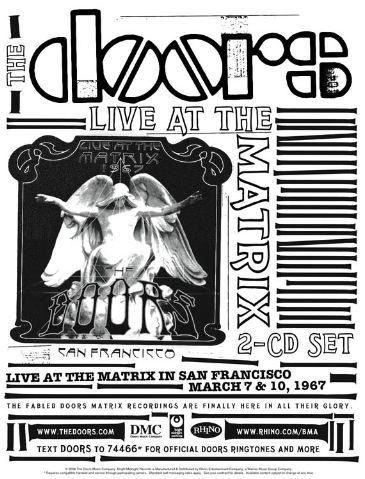 Flyer for Matrix album.
|
|
|
|
Post by TheWallsScreamedPoetry on Jan 22, 2011 17:40:38 GMT
The Doors: Live at the Matrix 1967
Money... That's What I Want
Barrett Strong’s “Money” has the distinction of not only being Motown’s first hit record (on the Anna label), but also is the only song to be covered on studio recordings by both the Beatles and the Rolling Stones. The Doors never recorded this title on any of the studio efforts, but long after Jim Morrison’s death, live versions of this song found its way on various Doors’ collections. There’s a version on this new release of a Doors concert from back in 1967, which is appropriate as this live double-disc set certainly seems like a greedy attempt to wring more cash from Doors fans.
The question of what should be done with 40+ year tapes of old Doors concerts is problematic. On the one hand, there is nothing to be gained by keeping the music locked away. Fans willing to pay to hear the music certainly would feel entitled to do so.
On the other hand, the situation is not so simple with this particular release. The record company (Rhino, a subsidiary of the Warner Music Group) claims that the music was restored and mastered from first generation tapes. Peter Abrams, the owner of the San Francisco club where the concert was staged, originally recorded the show and tried to sell them to the record company. However, the company claimed to have gotten the master tapes elsewhere and put out what’s here. Ardent Doors fans quickly noted the discrepancies between Abrams’ recordings and what the record company released. They believe this music was rerecorded from bootlegs while Abrams’ recordings were alleged to be much better in quality, especially on tracks like “Money”, that have audible wow and flutter.
Doors fans have posted warnings on the bands’ website and shopping pages like Amazon.com asking people not to buy this product. The fans want the record company to pay Abrams for his efforts and put out recordings made from the real, first generation tapes. This is still possible, according to Doors Manager Jeff Jampol.
Complicating the issue is the issue of integrity. Various members of the Doors have sued each other over fair use of the music. For example, keyboardist Ray Manzarek and guitarist Robby Krieger allegedly want to allow Doors tunes to be used in commercials while drummer John Densmore sees this as a desecration of the band’s heritage. Is this release of substandard tapes such a desecration?
D’uh! If better quality recordings exist and the owner is willing to sell, the record company should use them. The Doors and their fans deserve this. This is not a matter of making a profit. This is a matter of greed.
That said, what about the music that is presented here? This concert was recorded back between March 7-10, 1967 at a small club in California just after the release of the first Doors album and before “Light My Fire” was a hit. They are a somewhat obscure band at the time. The audience here does not intrude on the music by yelling, screaming, and applauding. In fact, sometimes the audience seems not to be present and it seems as if the recordings were made at a sound check or rehearsal.
That means that one can hear the Doors play live just before the circus began. Morrison and company can kick out the jams, forget the words, hit wrong notes, and just play without worrying about their immortality. No one interrupts the intro to hit songs with applause, because the band had no recognizable tunes. This leads to some magic moments. One can hear all the words to a song like “People are Strange” or “The Crystal Ship” because Morrison cares enough about the lyrics to carefully enunciate the words rather than just perform them. This also leads to some drab efforts. The eight-minute-plus instrumental, jazz-rock rendition of Gershwin’s “Summertime” yields no revelatory moments.
Live at the Matrix 1967 works as an archival document of the Doors before the band exploded and fame overtook them. Casual fans would be better off skipping this, but ardent adherents know there are weird scenes within the gold mine and there are some bright nuggets to be found here.
By Steve Horowitz
Pop Matters 11 December 2008
|
|
|
|
Post by TheWallsScreamedPoetry on Dec 13, 2011 14:54:27 GMT
|
|
|
|
Post by TheWallsScreamedPoetry on Feb 2, 2012 22:31:53 GMT
Live At The Matrix
Intriguing interplay between Krieger and Manzarek on cover-heavy unheard early gig.
It may partly be down to the positioning of microphones or nonintrusive levels on the mixing desk, but listening to this 1967 San Francisco club show gives the impression that The Doors were playing to the proverbial three men and a dog. It would be some weeks before all hell broke loose with the success of Light My Fire, and the band were, to a certain degree, still rock’s bestkept secret.
Indeed it was an unfeasibly small audience who saw the gig, so logic suggests that the absence of any great number of movers and shakers freed the band to flex their muscles, to experiment with both songs and the overall sound.
More than 40 years on, it’s as if we’re eavesdropping on a rehearsal, the sound of a quartet of creative men mapping out their own future, tinkering with the building blocks of an imminent legend.
The formative versions of classics-inwaiting like Crawling King Snake and Waiting For The Sun offer an insight into their passions and intentions, throwing up clues to what music fired them before they started playing together and signposting how the dynamic between them would eventually take shape.
It’s hard to think of a better aural illustration of an artist’s development, even for fans who thought they already knew it all.
Terry Staunton
Classic Rock Magazine January 2009
|
|



